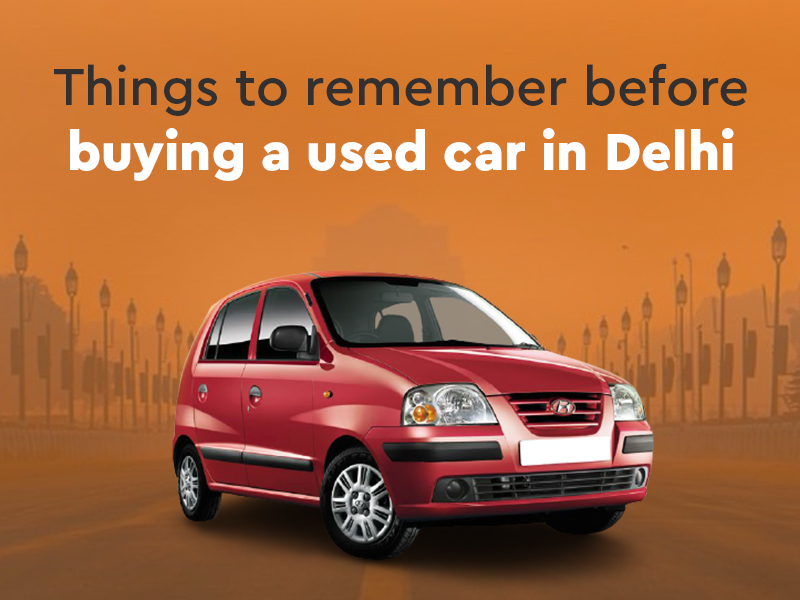This is a fact. In Delhi, for every three new automobiles sold, approximately four second-hand cars are sold. As you might expect, the used automobile market is booming, and in a big way. The benefits of buying a used car include, but are not limited to, financial savings. Because new cars lose value as soon as they leave the showroom, even a vehicle that is only a few months old can save you a lot of money.
For others, opting for a used automobile opens up a wide range of possibilities to fit a limited budget. According to Economic times “The used car market grew only marginally from about 4.2 million in FY20”
And, with the used car industry becoming more organized – with banks offering loans and many stores even providing warranties on the automobiles they sell – you can buy a used car with more assurance than ever before. However, buying a used car does not offer the same level of commitment as buying a new car.
You’ll have to swallow a bold pill from time to time before investing in someone else’s potentially abused vintage car. It has everything to do with the dread of getting a lemon. On the following pages, we’ve attempted to alleviate some of the concerns that a used car buyer could have by outlining what they should look for in a vehicle.
Where can I buy second-hand cars in Delhi?
Individuals, used vehicle brokers, and franchised pre-owned dealers are the three significant ways to buy a used car in India. If you know the vendor, the customer-to-customer approach appears to be the most straightforward option.
You have greater liberty to set reasonable pricing because no mediator is engaged in making quick cash off the transaction. You can also check out Droom Used Cars on their portal. They have a wide range of second-hand cars in Delhi. They perform all essential checks and crosscheck all documents before listing their vehicles over their portal.
What points to consider before buying second-hand cars in Delhi?
First and foremost, make sure that the vehicle you’re considering is suitable for your needs and provides a hassle-free ownership experience. Read evaluations of the car and try to speak with a few current owners to get a sense of its running expenses, joint problems, and the cost of spare parts and maintenance.
After you’ve decided on a car, do some research before embarking on your search and commencing negotiations. Find out what the going rates are for the vehicle you’re considering. Prices differ depending on the vehicle’s year of production, variant, condition, and even colour.
What about my budget?
Decide on how much money you want to spend, as well as how much flexibility you have to stretch it. When shopping, it’s all too easy to be swayed by a zealous salesperson into spending more than you can afford, only to have a more significant automobile or more features.
As a result, it’s up to you to remain watchful and grounded during the purchase. If you’re considering financing, keep in mind that interest rates on used car loans are typically higher than those on new car loans, so you may end up paying much more than the sticker price.
What’s the condition of the car?
Because you’re buying a single piece of used machinery rather than a brand-new car, this can be a little hard. Visually inspect the exteriors for any traces of an accident; for example, dents, repainting, and scratches on the body surface may indicate that the vehicle has been in an accident.
Raise it on a lift and inspect it for any damage to the underbody or suspension. Also, examine the condition of the tyres for uneven wear, as tyre replacement can be costly. Check the roof liner for symptoms of rust perforation, the seat and its mechanics, all electricals and lights, air conditioning, signs of an airbag deployment, and so on for the interiors.
After the first three years of ownership, new automobile prices tend to drop substantially, and after that, values tend to stagnate. This is a beautiful place to look for used purchase. In general, a two- to three-year-old investment will have experienced significant depreciation but will still be in good shape if adequately handled. If a warranty or extended warranty is still in effect, it may help keep repair costs down in the event of faulty parts.
Dents, repainting, and scratches on the body surface, for example, may indicate that the car has been in an accident. Raise it on a lift and inspect it for any damage to the underbody or suspension.
Also, examine the condition of the tyres for uneven wear, as tyre replacement can be costly. Check the roof liner for symptoms of rust perforation, the seat and its mechanics, all electricals and lights, air conditioning, signs of an airbag deployment, and so on for the interiors.
Ensuring the car’s paperwork is in order is just as vital as inspecting the vehicle’s overall condition. The registration certificate, vehicle insurance papers, original purchase invoice, road tax receipt, pollution certificate, and form 35 if the automobile was financed, as well as a copy of the financing company’s NOC, are all essential documents. Any changes to the vehicle, such as an engine replacement or a new body color, must also be recorded in the registration certificate. Please make sure the car hasn’t been in any accidents before you buy it.
Conclusion
Purchasing a used car can appear to be a difficult task. However, if you do your study and follow the above procedures carefully, you’ll likely be rewarded with an excellent vehicle that meets your demands and fits your budget.





